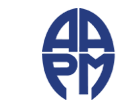| Question 1: Which of the following are potential sources of geometric distortion in MR images? |
| Reference: | A. Frannson et al., Aspects of MR Image Distortions in Radiotherapy Treatment Planning.
|
| Choice A: | Static magnetic field inhomogeneities. |
| Choice B: | Non-linear gradient fields. |
| Choice C: | Chemical shift artifacts. |
| Choice D: | Susceptibility artifacts. |
| Choice E: | All of the above. |
| Question 2: In the context of differentiating radiation necrosis from tumor progression, low percent signal recovery (PSR) values in recurrent metastatic tumors vs necrotic tissue are likely due to?
|
| Reference: | Barajas et al., Distinguishing Recurrent Intra-Axial Metastatic Tumor from Radiation Necrosis Following Gamma Knife Radiosurgery Using Dynamic Susceptibility –Weighted Contrast-Enhanced Perfusion MR Imaging, Am J Neuroradiology 30, 2009.
Speaker 2: Jing Cai, Ph.D.
Presentation Title: MR image processing, registration & planning for extra-cranial radiotherapy.
|
| Choice A: | Higher capillary permeability of metastatic tumors. |
| Choice B: | Lower capillary permeability of metastatic tumors. |
| Choice C: | Changes in metabolites in metastatic tumors. |
| Choice D: | Increased glucose uptake in metastatic tumors. |
| Question 3: Which of the following is NOT a challenge of MRI for radiotherapy treatment planning? |
| Reference: | Khoo VS, Dearnaley DP, Finnigan DJ, Padhani A, Tanner SF, Leach MO. Magnetic resonance imaging (MRI): considerations and applications in radiotherapy treatment planning. Radiotherapy and Oncology 1997; 42:1-15.
|
| Choice A: | Lack of electron density information. |
| Choice B: | Imaging speed. |
| Choice C: | Bone imaging. |
| Choice D: | Geometric distortion. |
| Question 4: Which of the following can cause uncertainties in MRI and CT registration?
|
| Reference: | J.N.H. Brunt. Computed Tomography – Magnetic Resonance Image Registration in Radiotherapy Treatment Planning. Clinical Oncology 2010; 2:688-697.
|
| Choice A: | Patient positioning and immobilization. |
| Choice B: | Scanning protocol. |
| Choice C: | Registration method. |
| Choice D: | All of the above. |
| Choice E: | None of the above. |
| Question 5: Which of the following can cause geometric distortion on MRI image?
|
| Reference: | Walker, A., Liney, G. P., Metcalfe, P. E. & Holloway, L. C. (2014). MRI distortion: considerations for MRI based radiotherapy treatment planning. Australasian Physical & Engineering Sciences in Medicine, 37 (1), 103-113.
|
| Choice A: | Chemical shifts. |
| Choice B: | Inhomogeneity in magnetic field. |
| Choice C: | Gradient non-linearity. |
| Choice D: | All of the above. |
| Choice E: | None of the above. |
| Question 6: The impact of magnetic field on dose distribution includes: |
| Reference: | Raaijmakers et. al. “Magnetic-field-induced dose effects in MR-guided radiotherapy systems: dependence on the magnetic field strength”. Phys. Med. Biol. 53 (2008) 909–923
|
| Choice A: | Asymmetrical penumbra. |
| Choice B: | Dose increase at the distal side of treatment beam. |
| Choice C: | Dose increase at tissue-air interface. |
| Choice D: | All of the above. |
| Choice E: | None of the above. |
